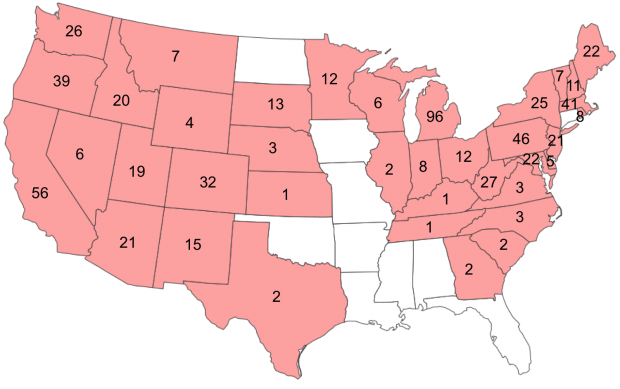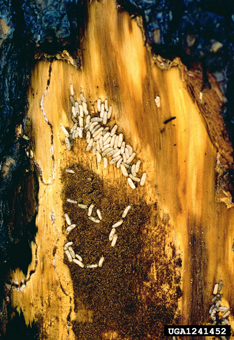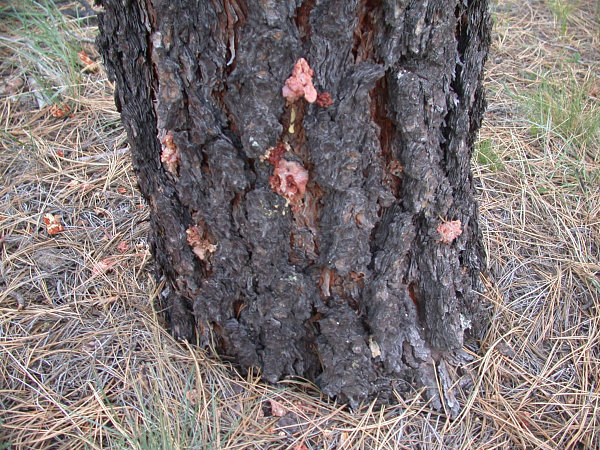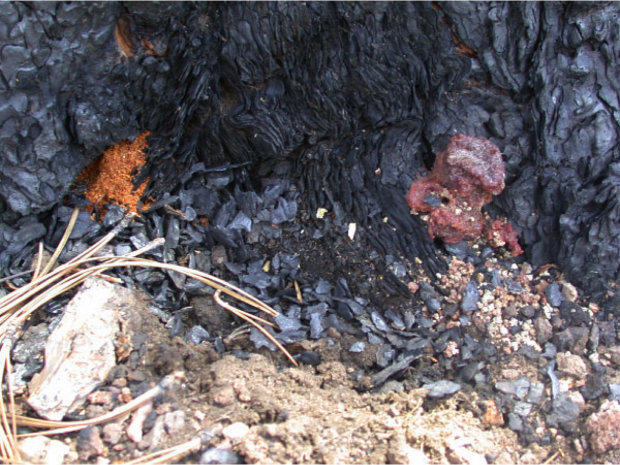For a printer friendly version of these instructions please download the PDF here.
The red turpentine beetle (RTB), Dendroctonus valens, (Figure 1) is a common bark beetle in the U.S. and has recently become a threat to China’s pine forests as an exotic pest. In its native range these beetles are found under the bark of dying or injured pine trees.

Figure 1. The red turpentine beetle.
Known distribution in the U.S.
The RTB is found throughout pine forests in most of the US except for the several states in the southeast (see Figure 2).

Figure 2. Number of recorded RTB collections in the U.S. from T. Atkinson’s curated bark and ambrosia beetle database; http://www.barkbeetles.info/.
Known hosts:
The RTB is ubiquitous wherever pines grow, in any forest, shade, and park trees 8 inches or larger in diameter throughout most of North America (except the South East). Look for resin exudates on freshly cut stumps, the bases of trees that are dying, and trees disturbed by fire, logging, land clearing, or construction.
Signs of an RTB attack
From a distance, pines with needles that have lost their color and turned red may indicate a potential RTB attack. “The best indicators of red turpentine beetle attack on pines are: large pink-white pitch tubes on the lower bole (Figure 3); accumulations of reddish brown sawdust at the base of the tree and in bark crevices (Figure 4); and accumulations of cream to pink colored crystallized resin granules at the tree base.”
Extracting the RTB from wood
RTB “egg galleries under the bark are fairly wide and linear to irregular in shape. Galleries extend downward from the entry hole 7 cm to 1 m and may even extend into large roots.” Unlike some other bark beetles larval feeding occurs in a gregarious fashion within the gallery.The easiest way to extract RTB from their galleries is to use a wide chisel or the blade of a hatchet to gently lever off the bark surrounding the pitch tube and entry hole. Once part of the gallery is exposed (Figure 5), beetles can be collected by hand, forceps, or aspirators and deposited in a labeled collection vial. Immediately after collecting, specimens should be stored in high quality ethanol (95%).

Figure 5. RTB adults and feeding larvae inside their gallery under the bark of an RTB infested pine.
Trapping the RTB
Funnel traps baited with a frontalin+turpentine+ethanol lures are the most successful method for trapping the RTB. If needed we can send you a specialized RTB lure from Synergy Semiochemicals. Alternatively, freshly cut pine is a perfect lure as well! If trapping beetles, traps should be checked every day/every-other-day to ensure that fresh, live specimens are being collected for preservation. Immediately after collecting, specimens should be stored in high quality ethanol (95%).
Storing collected beetles
Beetles collected from the same location can stored in the same vial. The vial should could contain 95% ethanol and a label containing collection info. Please store the vial in a freezer until they can be shipped or delivered by another collaborator.
Pictures and quoted text are from the U.S. Forest service Management Guide for Red Turpentine Beetle; http://www.fs.usda.gov/Internet/FSE_DOCUMENTS/stelprdb5191791.pdf.


